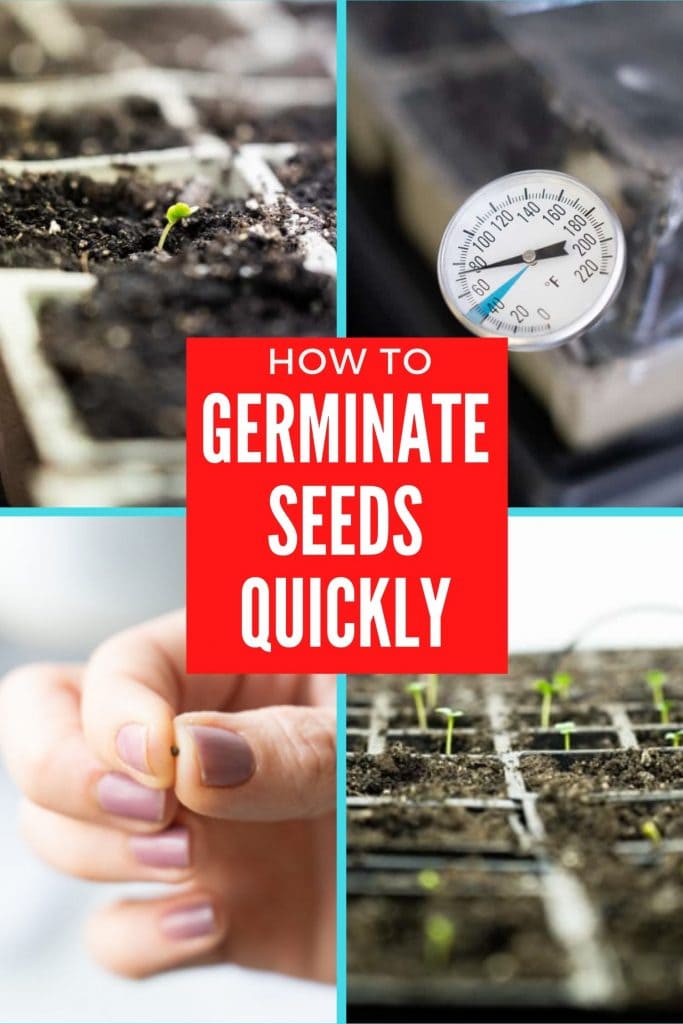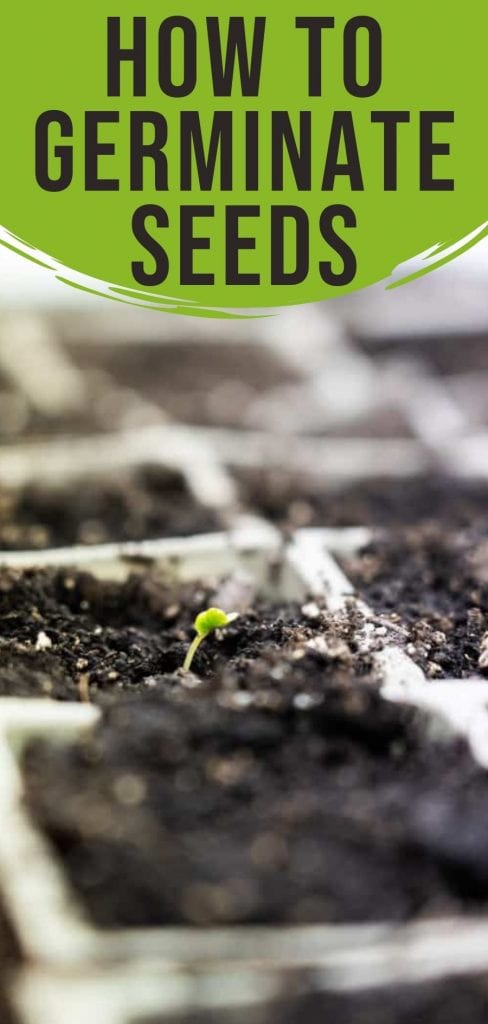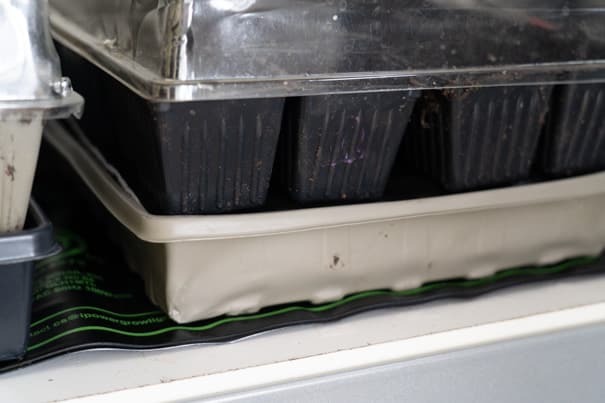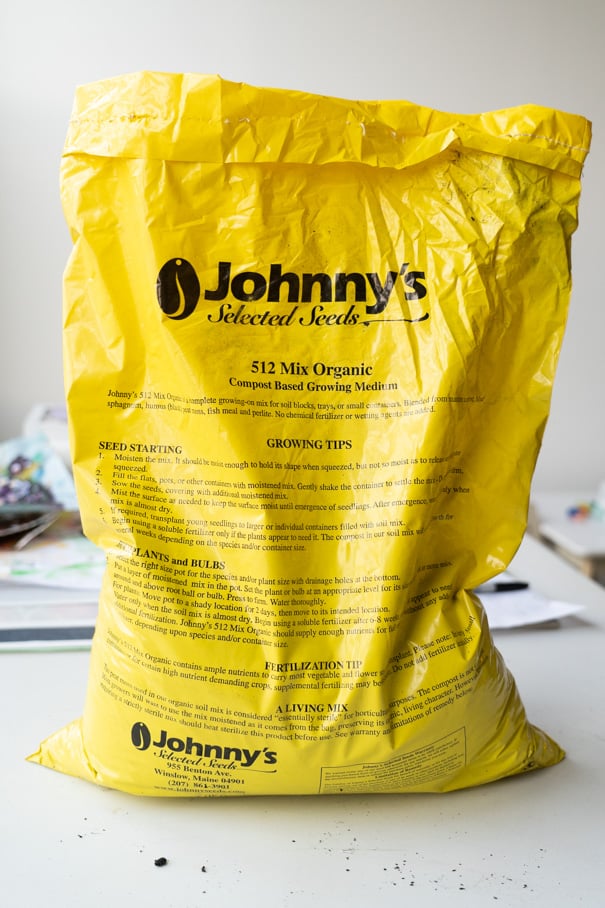We use a heat mat and thermometer to germinate our vegetable garden seeds. Find out how we use these tools to get a 100% germination rate. This saves time and ensures reliable sprouting.
How to Germinate Seeds
With garden season approaching, our seed order just arrived in the mail. Even though we’ve had a few near record low temperature days in NYC, that doesn’t mean we can’t be starting our Spring garden indoors. The first step is germinating our seeds.
After just 3 days of planting our seeds, we have a full tray of seedlings that have already broke through the soil!

To save time and money, we find that with just a little extra work you can have nearly perfect germination rate with the right tools. With our heat mat, thermometer and grow lights, let’s start the 2019 garden season and plant broccoli, cauliflower, kale and bok choy seeds.
Seedling Heat Mat
With a heat mat we can ensure quick and reliable sprouting for our vegetables. Our seedling sprouting area is near our windows and since we start our spring garden seedlings in January it can get pretty cold for them.
The germination mat helps keep an even germination temperature between 65-80′ F. The temperature varies on what you are growing. It has a thermostat to dial into the exact temperature we need, and we can easily adjust it if needed.
Once the vegetables are grown, your heat mat can help you with home brewing and fermentation later on. Seed mats come in many sizes but I always suggest to size up. Since a heat mat can be pricey at $30-$50, you want it to grow with you, because maybe next year your garden will be twice the size!
How to Use a Thermometer for Seedlings
To make sure the mat is accurate, we also use an extra thermometer that gets inserted directly into the soil. The numbers on both thermometers should match, or be fairly close.
We just stick the thermometer in the corner of the seed tray directly in the soil. The heat mat also has a digital temperature read on it, so we can quickly cross compare them.
Tip: Not all soil thermometers are created equal. Skip the $3 one and invest in a quality one that is going to be accurate, not fog up and last you over the years.
Seed Germination Temperature
We find that 75 degrees is a optimal temperature that our seeds need to sprout, and continue to grow strong.
So let’s get planting shall we?
We have a large list of vegetables we’ll be growing this year – some yearly regulars, some new and exciting varieties! More about the new vegetables in a later post. We’ll be planting outdoors in March in our sub irrigated planters, which means we need to get the seeds started now!
First up is the beginning batch of Spring vegetables, broccoli, cauliflower, bok choy and my beloved kale.
How to Plant Seeds Indoors
I’m always in awe of a little tiny seed like this grows a big cauliflower head! For our seeds, we usually exclusively use Johnny’s Seeds which has given us good results with their seeds.
We fill our seedling tray up with a organic compost medium mix. This provides a great beginning start for the seedlings. There are many varieties of growing medium but we like the 512 Mix.
Then we use a fancy tool to make little holes where we put the seeds into each block. Just kidding, we just usually a pen to quickly make holes.
Then we insert one seed in each hole.
After the seeds are all placed, we cover the holes back up.
Here’s a helpful tip that you should do right away. Grab a piece of paper and chart out what you just planted. Grid the tray out and mark what seeds you planted where. In the very beginning, it’s very hard to tell the plants apart, so try to stay organized.



Make sure to follow me on Facebook and Instagram where I post daily updates of our plants!
And check out how we grow tomatoes from seed for Summer gardening!
Pin for later:






















Leave a Comment